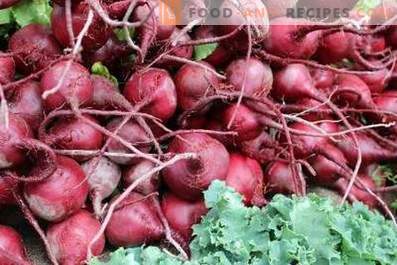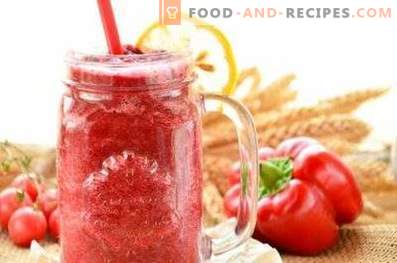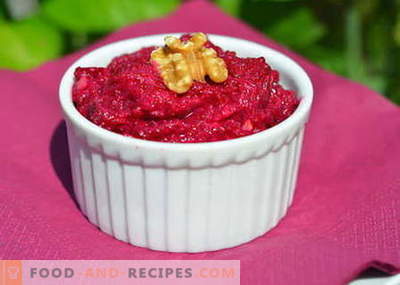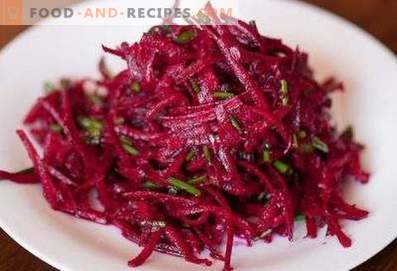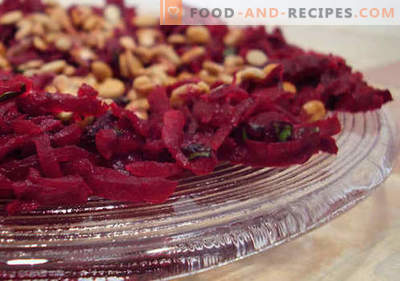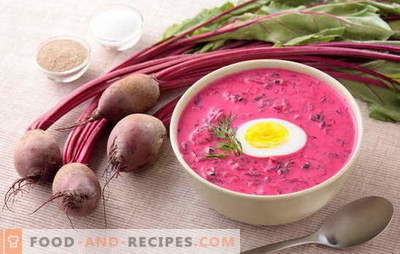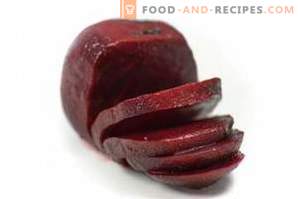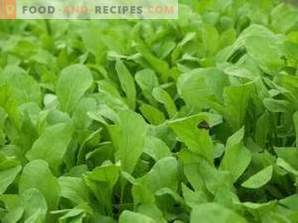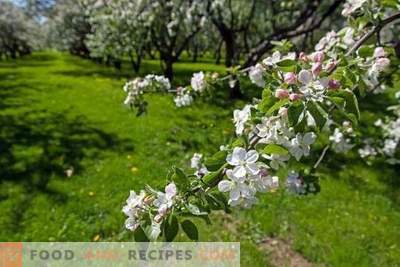Table beetroot has earned popularity not only for the magnificent sweet taste of its root crops, but also for their unique biochemical composition, which determines the exceptional use of this vegetable crop for the human body. The ancient Greeks, highly revered beets, sacrificed it to Apollo - the god of the sun, the patron saint of the arts and medicine. The famous ancient Greek healer Hippocrates included beet in the composition of his medicinal formulations, recognizing this vegetable is extremely important for health. To this day, the healing properties of beets are highly valued throughout the world.
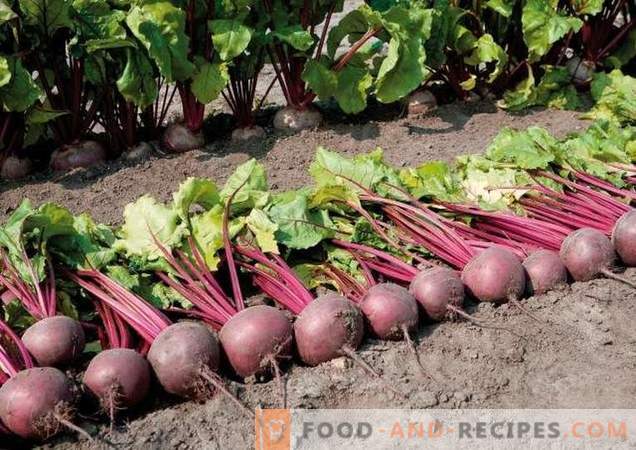
How is beetroot useful?
According to medical standards, a person needs to eat at least 7 kg of beets a year, as it contains the optimal ratio of nutrients. Among them are proteins, carbohydrates, essential amino acids, vitamins of group B, provitamin A, vitamin C, as well as numerous macro and microelements (sodium, potassium, magnesium, calcium, zinc, manganese, phosphorus, boron, iodine, etc.).
Beet is rich in betaine - an organic substance that plays an important role in metabolism. In particular, it promotes the breakdown and assimilation of proteins, prevents the accumulation of fat deposits, increases the level of vital activity of liver cells. Beetroot also has a healing, anti-inflammatory and analgesic effect.
This root vegetable contains natural antioxidants necessary for the maintenance of the vital activity of the human body. They help to resist bacteria and microbes, to combat the negative effects of the environment.
The best beet varieties from the Agricultural Holding “Search”
How to grow beets and other root vegetables not only beautiful, but also traditionally tasty and healthy? The answer is obvious - grow vegetables of domestic breeding! Breeders Agroholding “POISK” brought varieties of beetroot, which meet the most urgent needs of domestic growers:
- have a traditional taste;
- endowed with properties that are beneficial to human health;
- have characteristic saturated color, shape and size of root crops;
- are the most suitable for storage and technical processing.
Mid-season variety Mulatka beet - one of the leaders in terms of yield. Root crops are round, smooth, intensely colored. The flesh is dark red, without rings, excellent delicate taste. The mass of root crops reaches 160-360 g. The yield is high on all types of soil. The variety is characterized by high marketability and keeping quality of root crops.
Mid-season variety of beet Creole has excellent taste. The roots of this variety are round, smooth, with a thin axial tail. The flesh is dark red, tender and juicy, without rings. The mass of root crops is about 200-220 g. The yield is high. The variety is suitable for long-term storage and processing.
Late-ripening beetroot variety Slavyanka is distinguished by its unique cylindrical shape of root crops, reaching 10-15 cm in length and 6-9 cm in diameter. The flesh is dark red, very juicy, tender, sweet. The mass of root crops reaches 230-350 g. The variety has good keeping quality and resistance to major diseases.
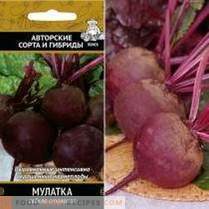
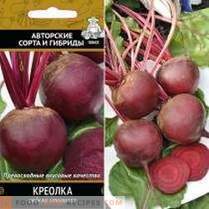
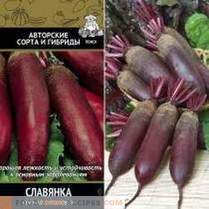
Mid-season variety of beet Darkie has excellent taste. Root crops are rounded flat, with a small rosette. Their mass reaches 350-400 g. The flesh is dark red and juicy. The grade differs in good lezhkost.
Sredneranny grade of a beet the Farmer has high resistance to droughty conditions. Root crops are round, equal. The flesh is maroon, without rings, juicy, tender, very sweet. The mass of root crops is about 160-260 g. Productivity is high. The variety has good storage ability of root crops during winter storage.
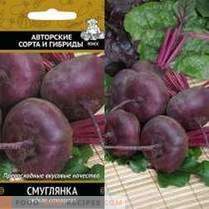

Golden rules of agricultural technology for high-quality and rich harvest of beets
Beet seeds are recommended to be sown after vegetable crops such as cucumber, tomato, cabbage or early potatoes. You should not grow beets after carrots.
The best soils for beets are loam neutralized and enriched with organic matter. Sour, overmoistened and poorly warmed soils are completely unsuitable for the cultivation of beets.
Land for sowing beet lime in the autumn. Fresh manure should not be applied to the soil, otherwise the quality of the roots will decrease. In the pre-winter period, it is recommended to fertilize the soil with phosphate and potash fertilizers. Nitrogen fertilizers should be applied in the spring before sowing.
The optimal time for sowing in the ground is the onset of a stable warm period (as a rule, from the first to the third decade of May).
Growing beets on garden ridges by sowing seeds, and sometimes with the help of seedlings.
The root system of beets can penetrate deep into the soil. The roots absorb moisture well, and the leaves intensively consume it. In the initial period of growth, beet needs regular and abundant watering. In the second half of the growing season, less water is required.
After each watering and rain, loosening the soil around the plants is very useful.
When thinned crops do 2-3 thinning. The first is carried out when two or three true leaves appear in plants. During subsequent thinning, 8-10 cm is left between plants.
It is recommended to start feeding for beets from the time of the first thinning and then as needed 2-3 times per season. Feed the beets with fertilizers containing mostly nitrogen and potassium.
To keep the beets stored for a long time, harvesting should be carried out before the onset of the first frost. Frozen root vegetables are not suitable for storage. The optimum temperature for storing root crops is from +1 to + 3 ° C with a humidity not lower than 80%. Following these rules, you will definitely get a good harvest of beets.
Beet in cooking, or where beet and borscht, there and look for us!
Due to its excellent taste and beneficial properties of beets has found the widest application in cooking. It is important to note that for cooking you can use almost all parts of this vegetable culture. So, for example, okroshka and beetroot soup are made from beet leaves, and the root crop is used for making salads, vinaigrette, borscht and many other popular dishes.
An amazing fact, but using beets they prepare even such exotic dishes as marmalade, sorbet and ice cream.
Of course, speaking of beets, we, first of all, think of borscht. There are some culinary “secrets” to help make this dish amazingly tasty.
For example, to borscht was not too faded, beets should be stewed separately from other vegetables. The root crop is recommended to be cut into thin strips or grated on a large grater, then add a little water, a teaspoon of sugar and a couple of tablespoons of lemon juice. Then put the beets on the fire and slowly simmer until it becomes soft. Thus, the beets will retain their natural color, and the soup will look much more appetizing.
You rich harvests and inspirations for culinary exploits!
